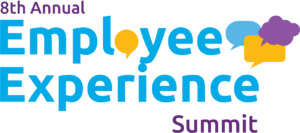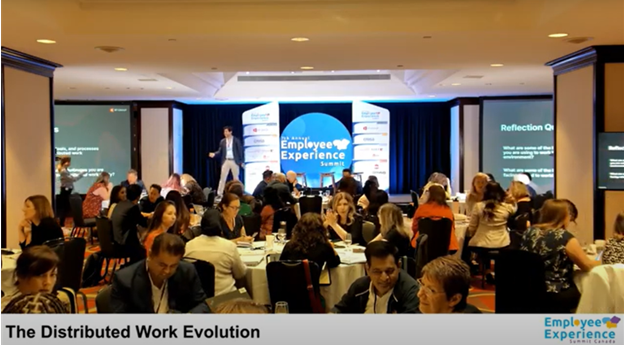- Executive Summary
In an era of unprecedented global transformation, organizations face critical challenges in managing human capital. The traditional approaches to talent management are rapidly becoming obsolete, replaced by dynamic, technology-enabled, and human-centric strategies that recognize the profound interconnection between individual potential and organizational success.
Key Points:
- Global workforce transformation overview
- Key challenges and opportunities
- Strategic imperatives for organizational success
- Contextual Landscape
The global workforce is experiencing a seismic shift driven by technological disruption, generational changes, and evolving economic landscapes. Understanding these complex dynamics is no longer a luxury but a strategic imperative for organizations seeking to remain competitive and adaptive in an increasingly volatile business environment.
Macro-Level Analysis:
- Global workforce trends
- Generational workforce shifts
- Technological disruption
- Economic uncertainty impacts
Workforce Composition Breakdown:
- Generational workforce distribution
- Skills gap analysis
- Emerging talent expectations
- Global talent mobility trends
- Theoretical Frameworks
Effective talent management transcends traditional HR practices, requiring a sophisticated understanding of interconnected theoretical models. These frameworks provide critical insights into how organizations can conceptualize, develop, and optimize human potential as a strategic asset, moving beyond transactional approaches to a more holistic, dynamic understanding of workforce potential.
Talent Management Models:
- Resource-based view of human capital
- Dynamic capabilities framework
- Psychological contract theory
- Talent ecosystem approach
Conceptual Integration:
- Interconnected talent management strategies
- Holistic employee value proposition
- Adaptive organizational design
- Comprehensive Talent Strategy
Talent strategy has evolved from a siloed HR function to a critical business imperative that touches every aspect of organizational performance. This comprehensive approach demands a multidimensional view that integrates attraction, engagement, development, and retention into a seamless, adaptive ecosystem that responds dynamically to both individual and organizational needs.
A. Talent Attraction Ecosystem Strategic Components:
In a global marketplace characterized by intense competition for top talent, attraction is no longer about filling positions but about creating compelling narratives that resonate with high-potential candidates. The modern talent attraction ecosystem requires a sophisticated, multi-channel approach that combines employer branding, targeted marketing, and innovative recruitment technologies.
Key Point:
- Employer branding architecture
- Multi-channel recruitment approaches
- Candidate experience optimization
- Diversity and inclusion integration
Attraction Methodology:
- Digital employer branding
- Targeted talent marketing
- Innovative recruitment technologies
- Predictive talent matching
B. Employee Engagement Framework Engagement Dimensions:
Employee engagement has emerged as a critical differentiator in organizational performance, moving far beyond traditional satisfaction metrics. Today’s engagement strategies must address complex psychological, emotional, and professional needs, creating holistic experiences that align individual purpose with organizational objectives.
Key Points:
- Psychological safety
- Purpose-driven work environments
- Continuous feedback mechanisms
- Personalized employee experiences
Engagement Strategies:
- Customized communication approaches
- Recognition and reward systems
- Flexible work arrangements
- Holistic well-being programs
C. Learning and Development Paradigm Development Architecture:
The rapid pace of technological and economic change has rendered traditional learning models obsolete. Modern learning and development must be a continuous, personalized, and adaptive process that empowers individuals to continuously reinvent their skills, capabilities, and professional identities.
Key Point:
- Skill-based learning pathways
- Micro-learning platforms
- Personalized development trajectories
- Continuous learning culture
Learning Modalities:
- AI-powered learning recommendations
- Experiential learning design
- Cross-functional skill development
- Global learning networks
- Technological Integration
Technology is no longer a supporting tool but a fundamental reshaper of how work is conceived, executed, and evaluated. The integration of advanced technologies like AI, machine learning, and predictive analytics represents a fundamental reimagining of the human-technology relationship in organizational contexts.
A. AI and Emerging Technologies Technology Ecosystem:
Artificial Intelligence has transitioned from a futuristic concept to a present-day strategic imperative. Its potential to transform talent management extends far beyond automation, offering unprecedented capabilities in predictive analysis, personalized learning, and strategic decision-making.
Key Points:
- Generative AI applications
- Machine learning in talent management
- Predictive analytics
- Intelligent automation
Technology Implementation Strategies:
- Ethical AI frameworks
- Human-technology collaboration
- Continuous technology training
- Privacy and security considerations
B. Digital Transformation Roadmap Digital Capability Development:
Digital transformation is not a destination but a continuous journey of organizational adaptation. Successfully navigating this landscape requires a holistic approach that simultaneously addresses technological infrastructure, human capabilities, and cultural readiness.
Key Points:
- Technology skill mapping
- Digital literacy programs
- Innovation acceleration
- Technology adoption frameworks
- Cultural Transformation
Organizational culture has emerged as the most critical yet intangible competitive advantage. In an age of rapid change, culture is no longer something an organization has, but something it continuously creates through intentional design, leadership practices, and collective sense-making.
A. Organizational Culture Design Cultural Pillars:
Culture is the invisible architecture that shapes organizational behavior, innovation, and performance. Designing a culture that is both stable and adaptable requires a sophisticated understanding of human dynamics, organizational psychology, and strategic alignment.
Key Points:
- Values-driven organizational design
- Inclusive leadership models
- Innovation and experimentation
- Psychological safety
Cultural Transformation Methodology:
- Change management approaches
- Leadership development
- Cultural assessment tools
- Continuous cultural evolution
B. Leadership Development Leadership Competency Model:
Leadership in the 21st century demands a radical reimagining of traditional hierarchical models. Modern leaders must simultaneously be visionaries, coaches, technologists, and cultural architects, capable of navigating complexity and empowering human potential.
Key Points:
- Adaptive leadership skills
- Emotional intelligence
- Strategic thinking
- Inclusive leadership practices
Leadership Development Framework:
- 360-degree leadership assessment
- Mentorship and coaching programs
- Leadership simulation experiences
- Continuous leadership learning
- Measurement and Evaluation
The future of organizational performance measurement lies in moving beyond static, retrospective metrics to dynamic, predictive, and holistic assessment frameworks that capture the complex interplay between individual potential and organizational capability.
A. Performance Management Evaluation Frameworks:
Key Points:
- Continuous performance tracking
- Objective and key results (OKR)
- Holistic performance assessment
- Data-driven performance insights
Measurement Metrics:
- Employee engagement scores
- Skill development progression
- Retention and turnover analysis
- Innovation and productivity indicators
B. Impact Assessment Comprehensive Evaluation:
Key Points:
- Quantitative and qualitative analysis
- Predictive talent analytics
- Organizational health indicators
- Benchmarking and comparative analysis
- Future Projections
Anticipating future workforce trends is no longer about making precise predictions but about developing adaptive capabilities that allow organizations to respond effectively to emerging challenges and opportunities.
Emerging Trends:
- Future of work predictions
- Technological disruption scenarios
- Workforce transformation trajectories
- Global talent market evolution
- Implementation Roadmap
Strategic implementation is the critical bridge between visionary thinking and tangible organizational transformation. A successful roadmap must balance ambitious objectives with pragmatic, phased approaches that allow for continuous learning and adaptation.
Strategic Deployment:
- Phased implementation approach
- Change management strategy
- Resource allocation
- Risk mitigation planning
- Case Studies
Real-world case studies provide more than illustrative examples; they offer nuanced insights into the complex dynamics of organizational transformation, revealing both the potential and the challenges of innovative talent management strategies.
Organizational Transformation Examples:
- Global enterprise implementations
- Industry-specific talent strategies
- Successful transformation narratives
- Lessons learned and best practices
Recommended Action Steps:
- Conduct comprehensive organizational assessment
- Develop tailored implementation strategy
- Establish pilot programs
- Create measurement frameworks
- Continuous adaptation and learning
Conclusion: Navigating the Future of Organizational Human Potential
As we stand at the precipice of a transformative era in workforce dynamics, organizations must recognize that their most critical competitive advantage lies not in technological infrastructure or financial capital, but in their ability to unlock, nurture, and continuously evolve human potential. The strategies outlined in this white paper represent more than a theoretical framework—they are a pragmatic roadmap for reimagining the relationship between individuals, technology, and organizational success. The future belongs to those who can create adaptive ecosystems that simultaneously empower individual growth and drive collective innovation.
This requires a fundamental shift from viewing employees as resources to be managed, to seeing them as dynamic, creative partners in organizational transformation. By embracing holistic talent strategies that integrate technological innovation, human-centric design, continuous learning, and purpose-driven culture, organizations can not only survive but thrive in an increasingly complex global landscape. The journey of workforce transformation is not a destination, but a continuous evolution—requiring curiosity, courage, and an unwavering commitment to human potential. As technological capabilities expand and global challenges become more intricate, the organizations that will lead will be those that understand a simple yet profound truth: investing in human capability is the most strategic investment an organization can make.
The future of work is not about predicting change, but about creating the adaptive capacity to continuously reinvent ourselves and our organizations. It’s time for incremental change has passed. Transformative, holistic talent strategies are not just an option—they are an organizational imperative.
This whitepaper is based on the 2024 Employee Experience Summit Session featuring Linda Iriah of Ipsos.




